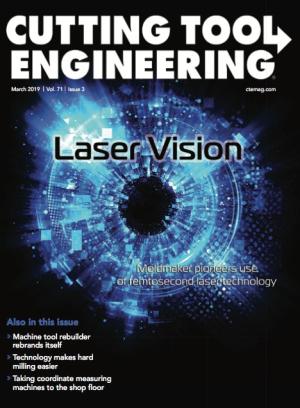When was the last time you looked at your shop? I know: You look at it every day. It seems fine, right? Maybe not.
I’ve been recommending and purchasing capital equipment for about 20 years. What amazes me is that once machines are purchased, installed and running, in many cases they look 10 years old within the first year. Operators don’t bother to wipe down machines at the end of their shifts. Employees don’t wipe up coolant or oil spills. What about hosing down the interior work area? Don’t tell me that these same machines have a decent preventive maintenance program. If they look like hell on the outside, you can probably rest assured they’re as bad on the inside.
I’ve been fortunate to travel to many shops and manufacturing facilities of various sizes across the U.S. and Canada and overseas. The company where I started out decades ago was the filthiest place I have ever worked. After three months, I couldn’t take it anymore and left, vowing never to work in manufacturing again. Oh, well, never say never.
I’ve worked at and visited machine shops that machined industrial plastics, including graphite. At some of these shops, I couldn’t tell they machined graphite, because their dust collection was awesome. At others, as soon as I walked past a machine that cut graphite, I would blow my nose and black particulates would come out. I knew that this was coming because everything had a coating of black dust. I didn’t want to touch anything, but the employees and management were not concerned.
However, shops that machined aerospace and medical components were usually clean, typically with state-of-the-art machines. But they had many older machines in the 5- to 10-year-old range. These machines were pristine. If I didn’t know the age of the machines, I would swear they were only a year or two old. There were several reasons for this. The shops machined parts for critical industries. The machines were inspected frequently. Customers would stop by to see how their products were coming along. Parts had to be clean before shipping them.
I once went to Singapore and visited a facility that machined components that required a metalized spray coating. The shop had banks of machines. It was temperature-controlled, and I could almost eat off the floor. Talk about clean. Most machines were in the 5- to 10-year-old range and looked almost new. There were no oil stains or drips from the viewing window or door. There were no oil spills or leaks on the floor by the machines. People took pride in their machines and facility.
I’ve worked at shops where if they knew that customers were coming the next day, everyone took a couple of hours to clean up extra well. For a shop with 30 workers, that would mean 60 hours of lost production. But companies do this a lot and think nothing of it. If you take pride in your equipment, it will show. When customers walk in, they will see the pride in your shop.
Take a look around your shop again. Do you see it in a different light? Is it worthy of visitors all the time, or do you have to scramble when notified of expected visitors?
Related Glossary Terms
- coolant
coolant
Fluid that reduces temperature buildup at the tool/workpiece interface during machining. Normally takes the form of a liquid such as soluble or chemical mixtures (semisynthetic, synthetic) but can be pressurized air or other gas. Because of water’s ability to absorb great quantities of heat, it is widely used as a coolant and vehicle for various cutting compounds, with the water-to-compound ratio varying with the machining task. See cutting fluid; semisynthetic cutting fluid; soluble-oil cutting fluid; synthetic cutting fluid.


